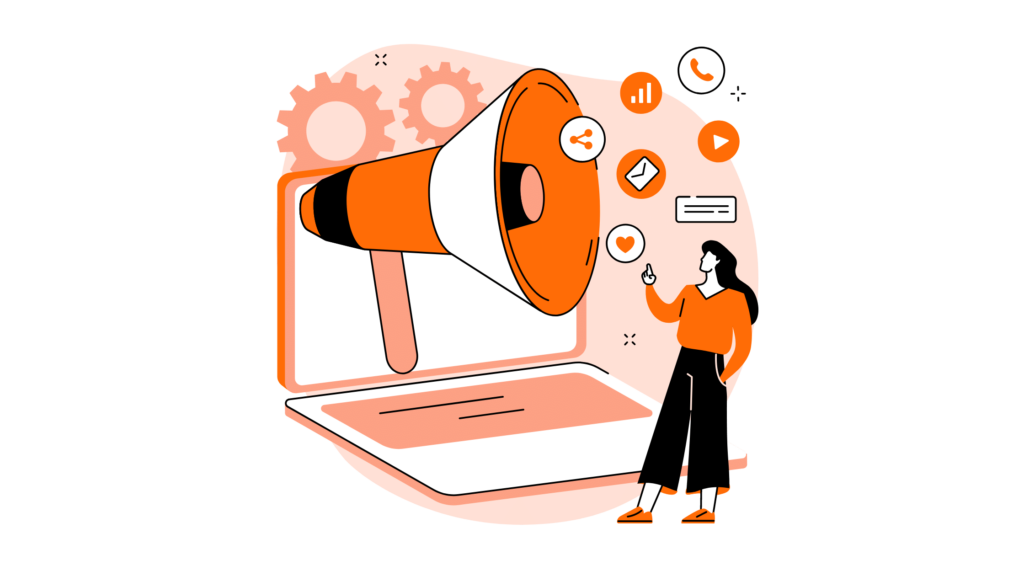Etsy is an awesome digital marketplace for independent creators and small businesses alike.
With a large number of visitors looking for handmade, niche, or high quality goods, Etsy is a great place for you to sell your products!
In this article, we’ll be looking at some of the best Etsy tips for beginners to help get you started on the platform as quickly as possible– and to give you the best chance of success!
Why Should You Be Selling on Etsy?

Your Customers Are There
Etsy has over 90 million active buyers, who could all be looking for your products! With such a large consumer base, Etsy provides an opportunity to get your product in front of more people than many other methods.
Your Competitors Are (Probably) There
In a similar vein, your competitors are also on Etsy. With over 7 million sellers, there’s a very large chance someone is selling products that fill your niche.
If you’re not on Etsy, then your competitors have a whole extra market that you don’t!
You Get Etsy’s Credibility For Your Business
Etsy is a well-established platform for online retail, and is associated with high quality merchandise. By selling on Etsy, you get to grab some of that reputation for your own business.
Etsy Tips for Beginners

1. Have Plans and Goals in Place

Everyone’s Etsy journey is different. Are you aiming to just sell a few things for fun? Or is Etsy the start of your own full-time business?
Understanding your goals when it comes to Etsy is a great way to make sure you’re tackling your store from the right angle.
If you’re aiming at making your Etsy shop into your main source of income, you’ll want to start thinking about how you can fill a large quantity of orders.
Making sure you have enough stock and supply to satisfy the number of sales you’re aiming for is key.
Similarly, you’ll probably want to plan how you’ll introduce any new products to your store, as well as any promotional campaigns that you might want to run.
2. Consider Your Keywords and SEO

As an online store, the way that most of your customers will find you is by using a search engine.
Whether that’s Etsy’s own search function or a redirect from a Google search, making sure you’re set up to show up at the top of the results makes the difference between one customer and hundreds.
SEO and keyword choice is a field that you can go into a lot of depth in, so we’ll just cover the surface level in this article.
First, pretend you’re a customer looking for your product. What do you think you would search for?
Write down some phrases you think an average person with no knowledge of your brand would search for and see if there are any common threads.
If you spot some common phrases, those are great keywords to be using in your product descriptions.
If you have a friend or two willing to help, getting them to come up with some phrases as well will be really useful. They’ll likely come up with things you’ve missed because you’re so familiar with your products.
The other thing to do is actually try searching for your product. What else appears? Are the products showing up similar to yours, or completely different?
If your search turns up nothing at all similar to your product, maybe reconsider whether the search phrases you’re using are accurate. If they are, then great! This means you’ll have an edge over your competition as you’ll be the only relevant option.
If you decide that the search phrases aren’t accurate, then it’s back to the drawing board to find some that are.
If the products turned up by your searches are similar to yours, now’s the time to take a look at what keywords your competitors are using on their webpages.
Often, your competitors have already done SEO work, so by having a look through their pages you can see what kinds of keywords show up.
Straight up copying keywords that your competitors have used can feel a bit slimy, so instead of this you can just take inspiration. Or, maybe you’ll even find another keyword that they don’t realize they’ve used!
3. Have Compelling Photos

Like any online shopping platform, customers want to be able to see what they’re buying before they buy it.
If your product photos are lackluster, customers are much less likely to buy things from your store.
A compelling photo doesn’t have to be shot on a thousand-dollar camera. Most of the time, your smartphone camera will do just fine, especially if you have a newer model.
What you should make sure to do is make your product photos look consistent where possible. That means consistent background, photo angle, and lighting.
Of these three, lighting is the most important. If a customer can’t see your product, they won’t buy it! Make sure the place you’re taking pictures is well lit, ideally with natural light as this will give the pictures a more lifelike quality.
Backgrounds can be branded or plain, but try to avoid taking a picture of your carpet. Even a sheet of A4 paper can make a serviceable background when placed on a flat surface.
To make sure you have a consistent photo angle, you can use a tripod. This is perhaps the least important of the three aspects we’ve talked about, but for a super professional look, a consistent photo angle will do wonders.
4. Have a Social Media Presence

A social media presence is great for any brand. If you can get more eyes on your products, you’ll be able to attract more customers.
Particularly for products typically sold on Etsy, which are often more crafty and unique than those sold on other digital marketplaces, a well-managed and consistent social media account can enhance your reputation. Customers who can see the “person” behind the business are more likely to associate the brand with unique products.
Personifying brands is nothing new — giants such as Wendy’s have been doing it with their social media accounts for years. And it works!
Setting up an Instagram or Facebook account with a little bit of personality will do wonders in drawing people to your Etsy store. Just be sure to backlink to your store, so that your potential customers can find you.
The other benefit of having a curated social media presence is in building trustworthiness. If people are skeptical that your products are legitimate, they’ll have something to see on another online platform to back up your offerings.
Although Etsy has a pretty good reputation, scams and shoddy products are all too common in the online shopping world. Some customers will want to make sure that they’re really getting what they think they are.
5. Shop Logos and Slogans Should Be Straightforward

What works for large businesses in terms of advertising often works for small businesses too.
Think about your favorite fast food chains, or local hardware stores. Their slogans are typically very short — both KFC and McDonald’s, for example, have three-word slogans.
A snappy slogan is easier to remember, and easier to search, meaning more people will be able to find your store. Plus, it’s easier for you to dot around your store pages and any social media posts.
Similarly, your logo shouldn’t be too complicated. This is for a few reasons.
Simple logos tend to be more recognizable and replicable. If I asked you, for example, to draw the flag of Mexico, you might struggle to draw the central eagle (or, if you’re from Mexico, think about Swaziland or Spain).
However, simpler logos are instantly recallable — the famous golden arches of McDonalds, the signature Nike “swoosh”, and Apple’s apple are all good examples.
Making your logo reasonably simple will help people recognise it, but it will also help you add it to your products. Simpler logos are easier to print, engrave, and resize.
6. Be Patient

Any new business venture takes time to get going. Don’t forget to give your Etsy store some time to breathe when you’re just getting started!
If you keep doing your best to optimize your pages, advertise your store, and create quality products, it’s very likely customers will begin to flow in.
Remember the old adage: if at first you don’t succeed, try, try again! It may take you some time to find your flow, and you may need to adjust your marketing techniques as you go.
It’s all part of the process, so just keep going!
Key Takeaway
Etsy can look like a big deal to get into. But really, it’s not that bad!
Just like any online platform, you’ll need to learn some new skills and tricks to promote yourself, but if you remember the tips we’ve looked at here you’ll be well on your way to success.
Remember:
- Simpler is better, in terms of logo and slogan
- Good SEO will bring in more customers
- A social media presences gives your brand more backing
- Good photos are the key to any online business’s success
- Understand your goals and plan around them.
Good luck with your new Etsy venture!

